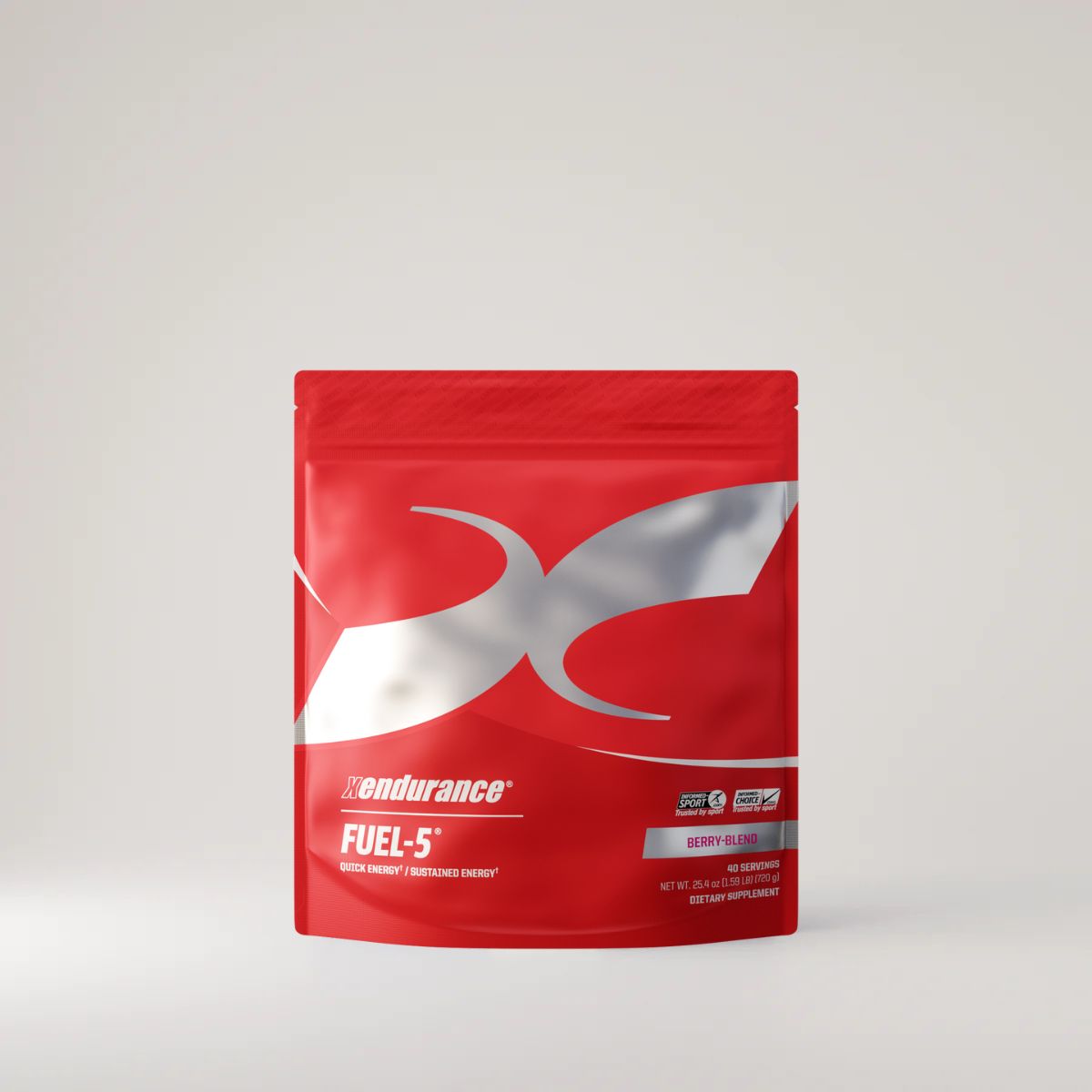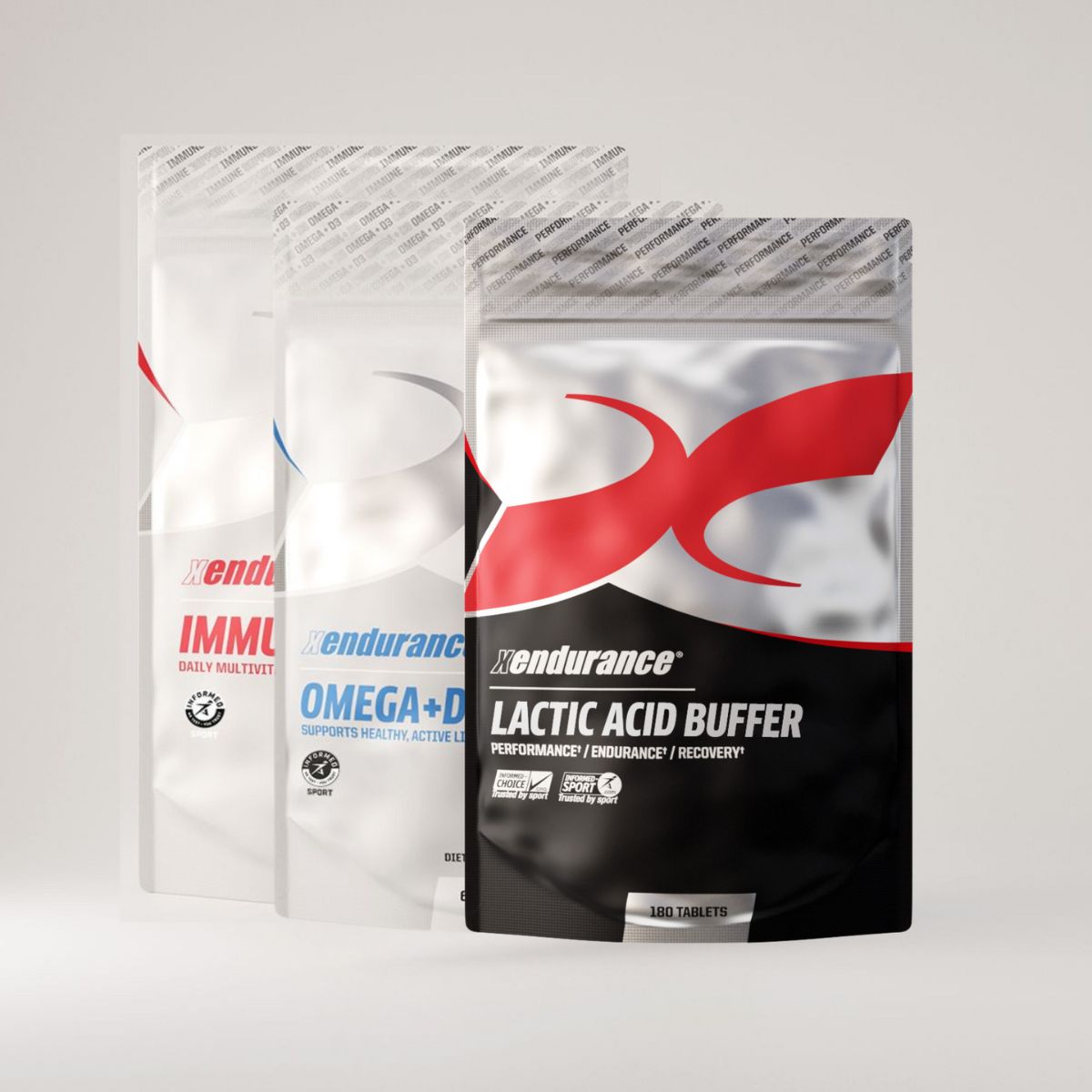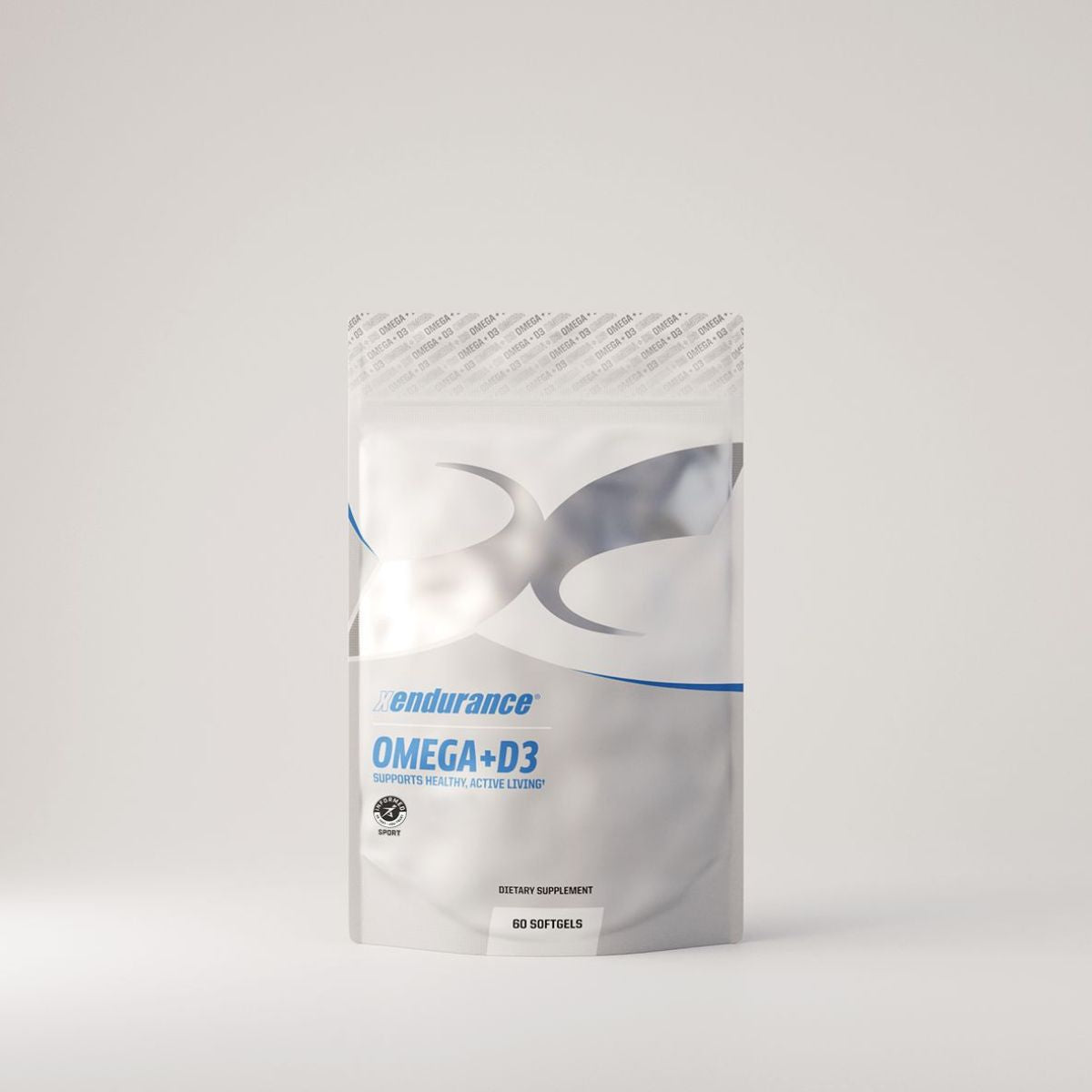Cycling has a way of exposing every weakness. On the flats, you can hide in the wheels, and we’ve all done it. But when the gradient tilts up, or when the sprint opens at the end of an urban circuit, there’s simply nowhere to hide. Power output becomes brutally honest, and fatigue shows itself in seconds.
As someone who trains on the bike alongside functional work for Hyrox, I’ve learned the hard way that cycling is less about one big effort and more about repeated surges: accelerations, climbs, holding the wheels, and closing gaps. That stop-start intensity is exactly where Xendurance Lactic Acid Buffer has become essential in my training. It doesn’t make the climbs feel easy, because nothing does, but it does help me hold wattage longer, repeat efforts more consistently, and recover quicker between surges.
Cycling is often called an endurance sport, but ask anyone who’s raced a criterium or attacked on a hill: it’s endurance built on layers of high-intensity efforts. Every time you dig into the red, hydrogen ions build up in the muscles, causing that familiar burning sensation and a loss of snap in the legs. When it happens once, it’s manageable. When it happens 20 times in an hour? That’s when form collapses.
The challenge is less about one climb or one sprint, and more about being able to go again and again without tailing off. That’s the exact point where Lactic Acid Buffer comes into play. By supporting the body’s natural ability to manage acidity, it helps delay that “fade” so you can sustain repeated power.
On the turbo trainer, I’ve noticed Buffer making a tangible difference in threshold and VO2 max sessions. A classic set of 4 x 8 minutes just above functional threshold power (FTP) used to see me gasping through the final reps with numbers dropping. Since using the Buffer from, well, us here at XEndurance, I’ve been a lot more consistent right through to the end. That consistency is what training is all about. The fitter you get, the higher your ceiling, but only if you can complete the work as prescribed and know you are making progress.
Out on the road, it’s the same story. On rolling routes with repeated climbs, I’ve found myself able to stay on top of the pedals later into rides, rather than grinding through nan’s treacle sponge. It’s not that the fatigue vanishes; it just doesn’t bite as quickly, which means I can train closer to race demands.
The beauty of cycling is its variety, and the XEndurance Lactic Acid Buffer adapts to all of it.
- Climbs: On long ascents, the difference isn’t about suddenly floating up the hill, but more about holding steady cadence deeper into the climb. You still suffer, but you suffer at a higher speed. Nice, hey!
- Criterium racing: In short, sharp city circuits, Buffer helps me respond to repeated accelerations out of corners without feeling like my legs are shot by lap ten.
- Endurance rides: Even on longer base miles, fatigue accumulates after hours in the saddle. Buffer helps me maintain form and avoid that late-ride slump, which is crucial for Ironman cyclists and sportive riders alike.
Wherever you ride, the principle holds: fatigue will come, but Buffer helps push it further down the road.
Next. Cycling isn’t just physical. Anyone who’s raced in a bunch knows how mentally draining it can be to hold position, watch wheels, and make tactical decisions at 180 bpm. This is where I’ve paired Buffer with Xendurance Focus.
Focus sharpens my concentration during long efforts on the turbo, where it’s easy to drift, and keeps me switched on in group rides when one lapse could mean missing the move. It’s not about hype or caffeine buzz; it’s about clarity. In cycling, where a split-second hesitation can decide whether you make the break or miss it, that clarity is worth a lot.
Here’s a real world example to demonstrate what I mean. A few weeks ago, I raced a local criterium. It’s a fast, flat circuit with constant accelerations. Normally, by the second half, my legs feel like trees, and holding wheels becomes brutal survival. This time, stacking Buffer + Focus, I stayed sharper, kept the power on, and had enough left for a proper sprint at the finish. Did I win? No, not even close. But, I competed better, held my form, and rode the race rather than surviving it. For me that’s solid progression.
But, let’s be clear: nothing replaces structured training. You still need to build aerobic base, push threshold, and work on recovery. But supplements like Buffer give you more from that work. The pros at the top of cycling understand that marginal gains aren’t just about the right kit or aero positions, they’re about physiology too. For everyday cyclists balancing jobs, families, and limited training hours, those same principles apply.
If Buffer helps me extract 2–3% more from a session, and I multiply that across weeks of training, that’s a significant edge by race day.
Cycling is as much about resilience as speed. You don’t just want to ride fast when fresh, instead you want to ride well when tired, late into the ride, or under repeated stress. That’s the kind of adaptation Buffer helps promote. And for anyone who’s ever crawled home from a long ride, or sat up in a race because the legs wouldn’t go again, you know exactly why that matters.
Cycling will always demand suffering. That’s part of its beauty. But there’s a difference between productive suffering, the kind that makes you stronger, and the kind that forces you to back off too soon. Lactic Acid Buffer helps me stay in that productive zone for longer. Paired with Focus, it keeps my legs firing and my head clear when it matters most.
So, whether you’re chasing Strava segments, (more on that from us soon, hopefully - we have a legend amongst the ranks…) pushing in your first sportive, or racing criteriums every weekend, Buffer is a tool that helps turn training into performance. It won’t make the climbs painless, no sir, but it will help you climb stronger, ride further, and sprint sharper.
And in cycling, that’s everything.










Leave a comment
This site is protected by hCaptcha and the hCaptcha Privacy Policy and Terms of Service apply.